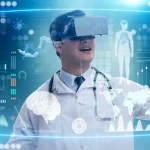
Healthcare Analytics Unveiled: Enhancing Patient Care and Predicting Future Trends
November 26, 2023Introduction: Navigating the Data Deluge for Healthcare Transformation
A. Growing Data in Healthcare
- Overview of the Data Expansion in Healthcare: The healthcare landscape is witnessing an unprecedented surge in data generation. From electronic health records and wearable devices to genomic information and real-time monitoring, the healthcare sector is immersed in a sea of diverse and voluminous data. This data explosion presents both challenges and opportunities, shaping the future of healthcare delivery and decision-making.
B. Potential of Analytics to Derive Insights:
- Importance of Analytics in Uncovering Patterns: Amidst the data deluge, the potential of analytics stands out as a beacon of insight. Analytics, with its ability to sift through vast datasets, discern patterns, and extract meaningful information, emerges as a key catalyst in deriving actionable insights. From understanding patient populations to optimizing operational efficiency, analytics serves as a powerful tool in unraveling the intricacies of healthcare data.
C. Techniques Transforming Healthcare Outcomes:
- Brief Overview of Transformational Techniques: The convergence of advanced techniques is reshaping healthcare outcomes. From predictive modeling and artificial intelligence to precision medicine and data-driven decision support, a spectrum of transformational techniques is at the forefront of revolutionizing how healthcare is delivered and experienced. These techniques promise not only enhanced diagnostic accuracy and treatment efficacy but also the potential to usher in a new era of personalized and patient-centric care.
In this era of healthcare data abundance, the introduction sets the stage for exploration. The narrative unfolds, delving into the profound impact of analytics and transformative techniques on healthcare, navigating the intricate intersections of data, technology, and improved patient outcomes.
Clinical Decision Support Systems (CDSS): Guiding Healthcare Decisions for Enhanced Patient Care
A. What is CDSS and How It Works
- Definition and Functionality of Clinical Decision Support Systems: Clinical Decision Support Systems (CDSS) represent a sophisticated integration of technology into healthcare, providing clinicians with evidence-based information at the point of care. These systems leverage electronic health records (EHRs), medical knowledge databases, and algorithms to offer recommendations, alerts, and relevant data to support clinical decision-making.
B. Real-time Surface of Relevant Data
- Integration with Workflow for Seamless Insights: A hallmark of CDSS is its ability to seamlessly integrate with clinical workflows. By interfacing with EHRs and other health information systems, CDSS ensures that relevant patient data is surfaced in real-time during the decision-making process. This integration optimizes the efficiency of healthcare professionals, offering timely insights without disrupting established workflows.
C. Gap Identification, Error Reduction, and Cost Control
- CDSS Role in Enhancing Patient Care:
- Gap Identification: CDSS excels in identifying gaps in care by analyzing patient data against established clinical guidelines. This proactive approach assists healthcare providers in ensuring that patients receive comprehensive and guideline-adherent care, closing potential gaps that could impact health outcomes.
- Error Reduction: By offering real-time alerts and reminders, CDSS contributes to error reduction. Clinicians are alerted to potential medication errors, contraindications, or deviations from best practices, minimizing the risk of adverse events and enhancing patient safety.
- Cost Control: CDSS aids in controlling healthcare costs by promoting evidence-based practices and reducing unnecessary procedures. Through efficient utilization of resources and avoidance of redundant tests or treatments, CDSS supports cost-effective care delivery.
In essence, CDSS emerges as a critical ally in the healthcare landscape, seamlessly integrating with clinical workflows to provide real-time insights and recommendations. Beyond its role in immediate decision support, CDSS plays a pivotal role in identifying care gaps, reducing errors, and contributing to cost-effective and patient-centric healthcare delivery. As technology continues to advance, the capabilities of CDSS are poised to further elevate the standard of care, making it an indispensable tool in the healthcare provider’s arsenal.
Predictive Analytics: Transforming Healthcare through Proactive Insights
A. Statistical and Machine Learning Models
- Utilizing Advanced Models for Predictive Analytics: At the forefront of healthcare transformation, predictive analytics harnesses the power of both statistical and machine learning models. These advanced models analyze historical patient data, clinical variables, and other relevant factors to forecast potential health outcomes. The synergy of statistical methodologies and machine learning algorithms empowers healthcare providers with predictive insights that go beyond traditional approaches.
B. Identifying Patients at Risk
- Proactive Patient Management through Predictive Insights: One of the pivotal roles of predictive analytics is the identification of patients at risk. By analyzing diverse datasets, including electronic health records, demographic information, and lifestyle factors, predictive models can stratify patient populations based on their likelihood of developing specific conditions. This proactive approach enables healthcare providers to implement targeted interventions and personalized care plans for individuals at higher risk, ultimately improving health outcomes.
C. Optimizing Interventions
- Strategic Decision-Making Based on Predictive Analytics: Predictive analytics empowers healthcare professionals with the ability to make strategic decisions based on future probabilities. From optimizing resource allocation to tailoring treatment plans, the insights derived from predictive analytics inform a spectrum of interventions. This strategic decision-making not only enhances patient care but also contributes to the efficient use of healthcare resources.
In the dynamic landscape of healthcare, predictive analytics stands as a beacon of innovation, offering a glimpse into the future of patient care. By leveraging advanced statistical and machine learning models, healthcare providers can identify at-risk patients, enabling proactive management and strategic interventions. Predictive analytics, therefore, emerges not only as a tool for foreseeing health outcomes but as a catalyst for a more personalized, efficient, and impactful healthcare paradigm.
Data Reporting and Visualization: Navigating Healthcare Insights with Clarity
A. Dashboards for Tracking KPIs
- Importance of Key Performance Indicators (KPIs): In the complex landscape of healthcare, Key Performance Indicators (KPIs) serve as navigational beacons, guiding healthcare organizations toward their goals. Dashboards equipped with KPI tracking provide a centralized, real-time view of essential metrics. From patient outcomes and resource utilization to operational efficiency, KPIs offer a comprehensive snapshot that facilitates informed decision-making and strategic planning.
B. Interactive Visualizations for Trend Spotting
- Spotting Trends in Healthcare Data: The power of data lies not only in its quantity but in the patterns and trends it unveils. Interactive visualizations transform raw healthcare data into dynamic representations, enabling stakeholders to spot trends with ease. Whether it’s monitoring the prevalence of specific conditions, tracking the effectiveness of interventions, or understanding patient demographics, visualizations provide a user-friendly lens through which trends come to life.
C. Guiding Policies and Strategies
- Informed Decision-Making through Visual Analytics: Visual analytics plays a pivotal role in guiding policies and strategies. Decision-makers, armed with visually digestible insights, can make informed choices that resonate with the overarching goals of healthcare organizations. From resource allocation and workflow optimization to strategic planning for future challenges, the clarity offered by visual analytics is instrumental in steering healthcare entities toward success.
In the age of data abundance, the ability to transform complex healthcare datasets into actionable insights is paramount. Dashboards tracking KPIs, interactive visualizations unveiling trends, and the guiding influence of visual analytics collectively empower healthcare stakeholders. As they navigate the intricate web of healthcare challenges, these tools serve as invaluable companions, illuminating the path to enhanced patient care, improved efficiency, and strategic excellence.
Improving Patient Engagement: Analytics as the Catalyst for Empowerment
A. Analytics Empowering Patients
- Enhancing Patient Understanding through Analytics: Patient engagement is elevated to new heights through the transformative power of analytics. By distilling complex healthcare data into comprehensible insights, analytics empowers patients with a deeper understanding of their health. From visualizing trends in personal health metrics to receiving personalized recommendations based on data analysis, patients become active participants in their healthcare journey.
B. Shared Decision-Making Portal
- Fostering Collaboration in Treatment Decisions: The era of shared decision-making is ushered in by the creation of collaborative portals. These platforms, enriched by analytics, serve as virtual spaces where patients and healthcare providers engage in meaningful discussions about treatment options. Informed by analytics-driven insights, patients gain the knowledge needed to actively participate in decisions that align with their preferences, values, and health goals.
C. Risk Factor Dashboards
- Visualizing Patient Risks and Empowering Decisions: The integration of risk factor dashboards is a groundbreaking approach to patient empowerment. These dashboards provide patients with visual representations of their health risks, allowing them to grasp the impact of lifestyle choices on their well-being. Armed with this knowledge, patients can make informed decisions to mitigate risks and actively contribute to their overall health.
In the realm of patient engagement, analytics emerges as a catalyst for empowerment. By enhancing patient understanding, fostering collaboration in treatment decisions, and visualizing health risks, analytics not only informs but actively involves patients in their care. As the healthcare landscape continues to evolve, the synergy between analytics and patient engagement becomes a linchpin for personalized, informed, and collaborative healthcare experiences.
Conclusion: The Transformative Influence of Analytics in Healthcare
A. Summary of Analytics’ Efficiency Boost
- Impact of Analytics on Healthcare Efficiency: In the dynamic landscape of healthcare, analytics emerges as a transformative force, revolutionizing the efficiency of healthcare delivery. The integration of advanced statistical models, machine learning algorithms, and data visualization tools streamlines processes, optimizes resource utilization, and provides actionable insights, ultimately enhancing the overall efficiency of healthcare systems.
B. Better Decisions Lead to Improved Health Outcomes
- Linking Analytics to Positive Health Results: The ripple effect of analytics extends beyond operational efficiency to tangible improvements in health outcomes. By facilitating better-informed decision-making, analytics contributes to personalized care plans, targeted interventions, and proactive management of patient health. The connection between analytics-driven insights and positive health results underscores the pivotal role of data in shaping the future of healthcare.
C. Research Linking Genomic Data with EHRs
- Future Perspectives on Integrating Genomic Data: The horizon of healthcare is marked by the exciting prospect of integrating genomic data with Electronic Health Records (EHRs). As research endeavors continue to unravel the intricacies of the human genome, the seamless integration of genomic information into routine healthcare data holds immense potential. This fusion of genomics and EHRs is poised to unlock new dimensions in precision medicine, offering tailored approaches to diagnosis, treatment, and disease prevention.
In conclusion, the efficiency boost catalyzed by analytics in healthcare transcends mere optimization of processes; it becomes a linchpin for improved health outcomes. The synergy between analytics and positive health results underscores the transformative potential of data-driven decision-making. Looking ahead, the integration of genomic data with EHRs represents a future frontier, promising to usher in an era of truly personalized and precise healthcare. As the journey of healthcare analytics unfolds, its impact reverberates across every facet of the healthcare ecosystem, shaping a future where data is not just information but a catalyst for holistic and individualized care.















